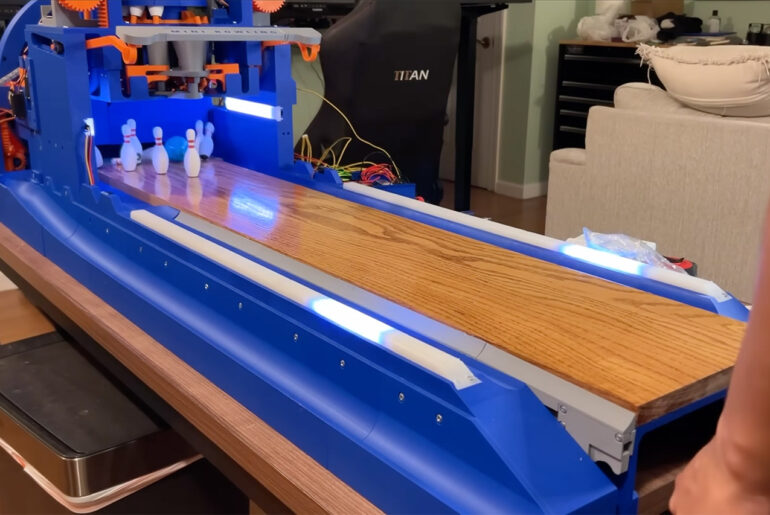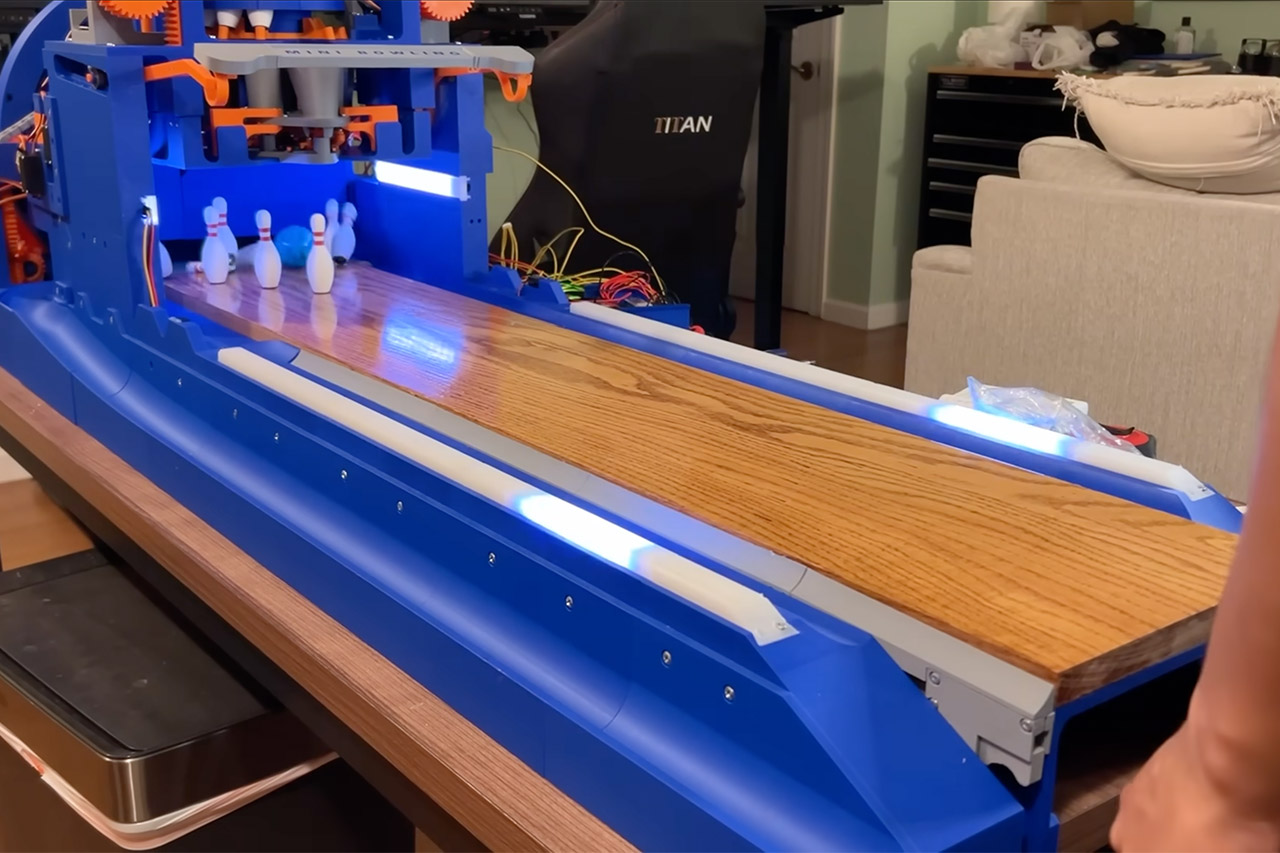
Danny Lum spent more than a year attempting to make a completely insane idea into reality. He had an idea for a mini bowling lane that he could simply set up on his kitchen table, with just as many features as the real thing, including pins that arranged themselves after each roll. What began as a peaceful little side project during those long evenings at home quickly grew into something far larger than he had anticipated.
Danny, who works as a designer and has a busy schedule, genuinely invested hours of his own time into getting the prototypes just right; there were times when he’d stay up late into the night trying to figure out the components that just wouldn’t cooperate. By the end, his design had done incredibly well on Kickstarter, raising over $25,000 in only one day, proving that even grown-up games deserve a place in any home, no matter how small.
- High-Speed Precision: Experience unparalleled speed and precision with the Bambu Lab A1 Mini 3D Printer. With an impressive acceleration of 10,000...
- Multi-Color Printing with AMS lite: Unlock your creativity with vibrant and multi-colored 3D prints. The Bambu Lab A1 Mini 3D printers make...
- Full-Auto Calibration: Say goodbye to manual calibration hassles. The A1 Mini 3D printer takes care of all the calibration processes automatically,...
The heart of the design is a simple four-foot piece of wood, which is essentially a scaled-down version of the actual thing that can fit almost anyplace. Lum chose a one-by-ten-inch oak board for the build since it was robust enough; he sanded it smooth before applying the famous lane lines and sealing it all in with a coat of polyurethane, ready to resist all the bumps and scrapes that come with continuous use. At the front, 10 custom pins await in triangle formation, each one a delicate balance of plastic and rubber. He prints the bodies in PLA and then adds a TPU base to keep them from slipping off the wood. Inside, a simple M6 fastener adds just enough weight to make them fall like the pros, and their center is low enough to remain put even over tiny bumps.

The game truly begins when you start rolling the ball because Lum just utilizes a simple old two-inch marble that is hefty enough to knock down the pins with a satisfying smash. A laser sensor on the side detects where the ball is headed and begins resetting the pins as soon as it passes by. The bumpers along the sides can be folded up or down, and the small plastic arms are spring-loaded into position, latching firmly with a pleasing click. His early prototypes had some jamming issues, but after six rounds of fine-tuning, they now perform flawlessly – the ball always bounces back on track. Without them, the curved gutters will guide a straight shot in, which is ideal for beginners who may be slightly off the mark.
The knocked-over pins then drop back to the rear and are sorted by a conveyor chain. Lum designed the links to nest together, and they emerge as a single solid piece with miniature axles made of filament that push straight in. A single motor turns on and begins pulling the chain; the minor tilt means gravity does some of the work for it. Meanwhile, dividers separate the pins from the marble, and the tall shapes are funneled into a nice little notch on a wheel, which flips them over. Then a pan catches them, ensuring that every single pin lands in the same location; from there, an escalator chain lifts them all up and out of the way, with each few links along the chain containing a clever trick, such as a small trapdoor that catches the pin and carries it up without letting go.
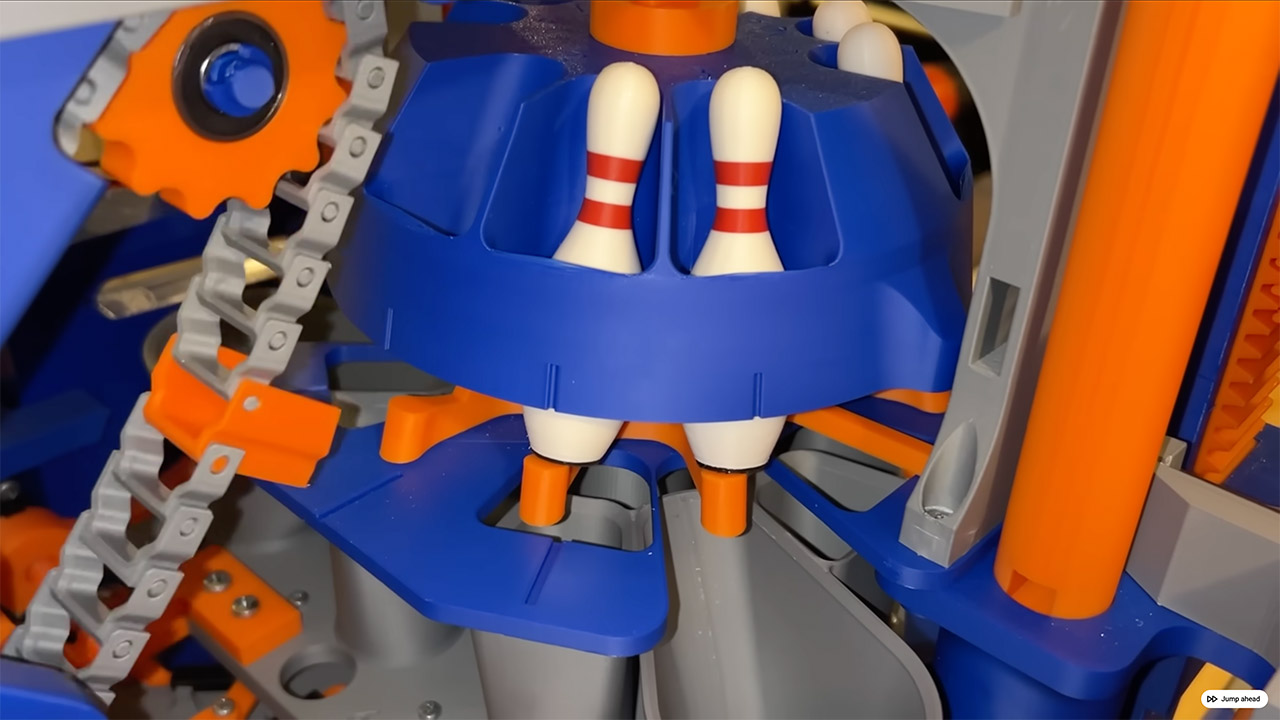
A whirling turret on top takes the pins one by one, counts them out with an infrared sensor to ensure that all ten make it. Magnets help to position the first pin, and funnels nudge all 10 into a precise tiny triangle. The entire deck then slides down onto the lane with a smooth, almost silky motion, allowing the pins to fall into their exact configuration. The scissors arms, which have rubber grips on them, will hook onto any pin left behind from the previous roll and yank it clear. Then there’s the sweep bar, which pushes debris back while preventing the next shot from passing through until everything is reset. Lum used online tools to create a design for the sweep’s path, which he then printed in an extremely flexible material that can bend and take impacts without breaking.
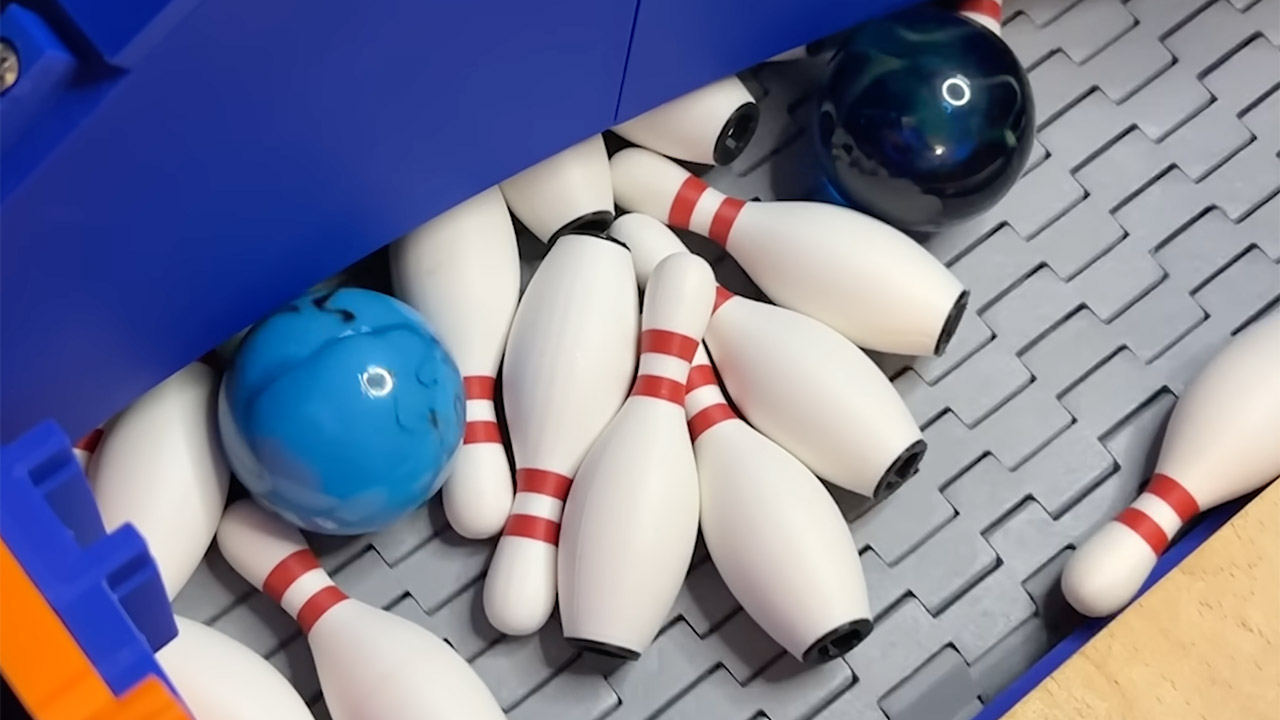
The marble uses a small return ramp to cruise down a tilted part of the conveyor that the pins cannot access. Sensors just watch the white dots on the pin tops with a small USB camera and keep track of the score. The software then adds up the standing pins and displays the results on screen alongside some brief animations for amusement. There are NeoPixel lights along the edges that glow at a low level, allowing you to play late at night without bothering anyone. Lum first considered employing fancy switches, but eventually collaborated with another creator who handled all camera setup.
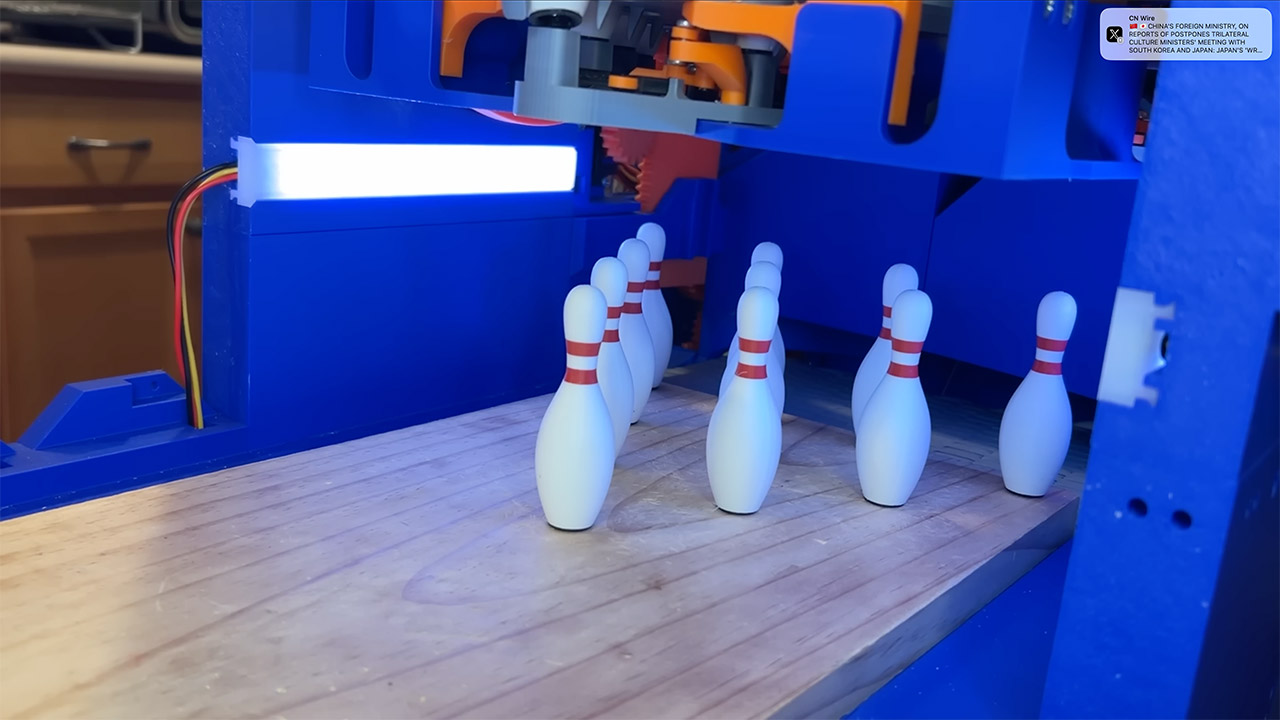
In the end, Lum’s small lane provides the whole bowling experience, albeit without the real bowling ball. One roll initiates a sequence of motion that feels completely alive, with the pins clacking away and the reset whirrin’ silently in the background. Players become obsessed with chasing the perfect strike, seeing the lights flash and the score rise. It began in Lum’s home workshop and is now available to anyone with a printer and a little patience, proving that the finest games emerge from those who refuse to give up.

